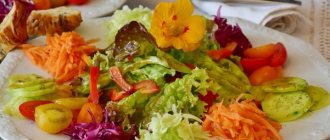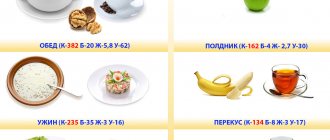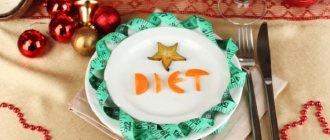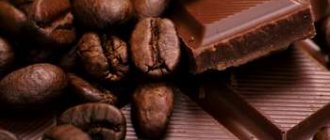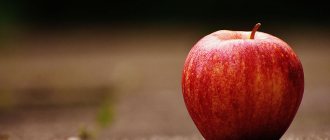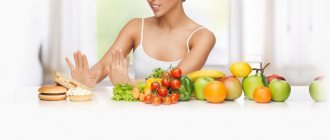Gastroduodenitis is usually understood as an inflammatory disease that affects the mucous membrane of the stomach and duodenum. Most often, the cause of the pathological process is infection with the bacterium Helicobacter pylori. The disease is considered one of the varieties of chronic gastritis. Treatment involves not only the use of medications, but also the exclusion of harmful foods from the diet. During this period, a suitable diet and nutrition for erosive gastroduodenitis is very important for the patient.
Principles of all types of diet for gastroduodenitis
- Exclusion from the diet of long-digesting foods;
- Serving food boiled or pureed;
- Serve dishes warm, avoid eating excessively hot and cold foods;
- Six meals a day at strictly defined times;
- Limiting salt intake;
- Refusal of fatty, fried, smoked, pickled foods, spices and herbs, alcohol and canned products.
The type of diet used in the treatment of different types of gastroduodenitis depends on the acidity of gastric juice, on the form and stage of the disease.
The average daily food intake for chronic gastroduodenitis should include:
- 10 g of plant and 60 g of animal proteins;
- 80 g fat;
- 230 g carbohydrates.
Based on the above information, the list of allowed foods for the diet for gastroduodenitis is as follows:
- fruits and fruit juice;
- pasta, cereals;
- dried fruits;
- milk, cream;
- starch;
- sugar;
- chicken meat, fish;
- eggs;
- sour cream;
- tea.
The average daily calorie intake for this diet is 1900 kilocalories.
The basic principles of the diet for gastroduodenitis are the following:
- minimize hard-to-digest foods (mushrooms, bananas, mussels);
- It is strongly recommended not to get carried away with delicacies, but to prefer dishes of national cuisine;
- eat 4 to 6 times a day, in small portions;
- It is desirable that there be equal breaks between each meal;
- food should preferably be at room temperature;
- Consume sweets exclusively in their natural form (honey, jam);
- Mineral and purified water without carbon is recommended for drinks.
When dieting for the treatment of gastroduodenitis, it is recommended to consume dishes in the following form:
- low-fat vegetable, meat and fish broths;
- puree soups;
- steam cutlets and meatballs;
- boiled eggs and in the form of omelettes;
- skim cheese;
- fresh juices;
- herbal decoctions;
- weak tea;
- vegetable and fruit puree;
- honey, jam, marmalade.
Table 1 purpose
The diet is low in protein and does not irritate the mucous membranes. 1a is used during the correction period and lasts 5-7 days. Afterwards, patients move to tables 1b and 1c.
Diet 1a
Contains 1900 kcal.
Nutrient composition:
- proteins – 71 g (of which 60 g are animal proteins);
- fats – 80 g;
- carbohydrates – 230 g.
Daily food intake:
- cereals, pasta – 85 g;
- fruits – 200 g + 100 g juice;
- dried fruits – 20 g;
- milk – 800 g;
- cream – 50 g;
- starch – 10 g;
- sugar – 80 g;
- meat and chicken – 150 g;
- fish – 75 g;
- eggs – 2 pcs;
- butter – 40 g;
- salt – 10 g;
- tea – 2 g;
- sour cream – 50 g.
The amount of salt consumed is reduced in case of gastritis with increased secretory function. It is recommended to consume more milk. The diet is not rich, so it is prescribed for no more than a week.
Diet 1b
The calorie content of the diet increases by increasing proteins and carbohydrates. The amount of fat does not fall below normal so that the process of cell regeneration occurs. The lipid layer requires cholesterol, present in animal fats. Lipids help the gastrointestinal tract function, preventing constipation.
The diet contains 2505 kcal.
Nutrient composition:
- proteins – 95 g, of which animal proteins – 65 g;
- fats – 81 g;
- carbohydrates – 339 g.
Daily food intake:
- cereals, pasta – 70 g;
- fruits – 150 g + 100 g juice;
- dried fruits – 20 g;
- milk – 600 g;
- cream – 50 g;
- starch – 10 g;
- sugar – 70 g;
- meat and chicken – 150 g;
- fish – 75 g;
- eggs – 2 pieces;
- butter – 40 g;
- salt – 10 g;
- tea – 2 g;
- sour cream – 50 g;
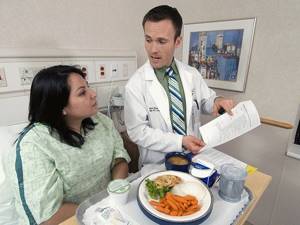
It is also allowed to gain nutrients using coarse foods:
- cottage cheese (6-9% fat) - 60 g;
- white crackers – 150 g;
- potatoes – 150 g;
- vegetables – 150 g.
The calorie content of crackers is one and a half times higher than that of bread. This is a good addition to the nutritional value of the table. There is little fiber in the diet, but 150 g of vegetables is enough to get the necessary vitamins and minerals. Fresh cabbage is not allowed. It is added boiled to soup.
Diet 1c
The diet contains 2700 kcal.
Nutrient composition:
- proteins – 100 g;
- fats – 97 g;
- carbohydrates – 383 g;
The diet is similar to 1b, but the calorie content increases:
- White flour bread – 250 g;
- cheese – 10 g;
- vegetable oil – 10 g;
- sour cream – 25 g.
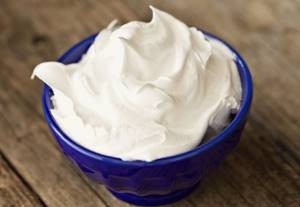
The daily norm of potatoes is increased by 100 g, vegetables - by 250 g. The egg is removed from the menu and the milk norm is reduced to 500 g.
Indications for choosing a diet
For various forms of the disease, you should use diet No. 1 with its varieties, or diet No. 2. During the recovery period, after relief of the main symptoms, diet No. 15 is prescribed.
Choosing a power system - main indications:
- Diet No. 1 – used during the treatment of gastroduodenitis in remission and exacerbation against the background of increased or normal acidity of gastric juice;
- Diet No. 1a - used in the acute stage of the disease with high acidity;
- Diet No. 1b – used after the previous diet;
- Diet No. 2 - used during the treatment of gastroduodenitis in remission and exacerbation against the background of low acidity of gastric juice.
- Diet No. 15 is practically no different from the diet of an ordinary person leading a healthy lifestyle, except that it contains fractional meals in small portions. Additionally, avoiding snacks on the go, fried, smoked and canned foods, spices and alcohol are practiced. Food used in this diet should be warm, or at “room” temperature.
Diet No. 5 for gastroduodenitis
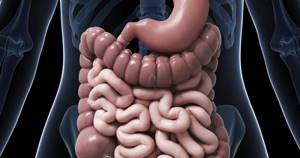
The diet for gastroduodenitis has several variations.
Gastroduodenitis requires accompanying treatment not only of the duodenum and stomach itself, but also of the liver and biliary tract. In addition to the main diet No. 1, you need to adhere to diet No. 5.
For gastroduodenitis, as a rule, tables No. 1 and 5 are prescribed. The latter is intended to chemically spare the liver, normalize the functioning of the liver and biliary tract, and improve bile secretion with adequate nutrition. The diet itself for gastroduodenitis involves a reduction in refractory fats, with normal consumption of proteins and carbohydrates. All products are prepared by boiling and soaking, and stringy meats and starchy vegetables are pureed.
Therapeutic diet No. 5 for gastroduodenitis excludes the consumption of pork and beef, lamb and duck, lard and cooking fats. It is also not recommended to eat goose meat, offal, smoked meats and sausages, canned food, and salted fish.
Diet No. 5 involves cooking lean meat and fish - young beef, rabbit, lean pork, as well as rabbit, chicken and turkey. From fish - all low-fat, lean varieties.
You can use butter and refined oil in its pure form and in cooking, add cinnamon and vanillin.
From baked goods, exclude fresh bread, fried pies or puff pastries. Sweets include dried fruits and jellies, mousses and compotes, meringues and marmalade, marshmallows, and honey. Replace sugar with sorbitol.
With diet No. 5, cream and milk, fermented baked milk and homemade sour cream, salty and fatty cheese are not allowed, but kefir and acidophilus, yogurt and cottage cheese and low-fat cheese are allowed. You can add half an yolk to your food daily.
It is necessary to give preference to soups and cereals. Moreover, when preparing soups, you should avoid steep broths.
Diet No. 1 for gastroduodenitis
Diet table No. 1 is recommended for diseases of the stomach and duodenum, both during the period of exacerbation and during the recovery stage. In addition, it can be recommended to patients with exacerbation of chronic gastritis or acute gastritis.
This diet for gastroduodenitis is most often used at the last stage of treatment of an exacerbation, because it does not contain foods that stimulate gastric secretion. When following this diet, normal, nutritious nutrition is maintained, but the gastrointestinal tract is more spared, ulcers heal better, gastric secretion is normalized, and inflammation is reduced.
Nutrition rules
It is not enough to know what you can and cannot eat during a diet for duodenitis. It is also very important to follow nutritional rules.
Patients are advised not to overeat. You need to eat fractionally, that is, in small portions (200–300 g each). The intervals between meals should be no more than 3 hours, but not less than 2 hours. Eating too often is also harmful.

A diet for duodenitis and gastritis requires compliance with several more rules:
- Prepare food using methods such as steaming, boiling, baking. Fried foods are prohibited during the treatment period.
- Eat food warm (optimal temperature is 36–38 degrees). Hot food burns the mucous membrane, and cold food is poorly digested, causing bloating and constipation.
- Use only pureed foods. Food in this form is better digested and does not injure the inflamed mucous membrane.
- Do not overuse salt. This seasoning in large quantities enhances the secretion of digestive juice, which irritates the inflamed mucous membrane. It is allowed to add up to 8 g of salt to products.
- Avoid alcohol. Ethanol slows down the restoration of damaged mucous membranes, increases inflammation, because it provokes gastric secretion.
- Quit smoking. Cigarette smoke negatively affects not only the lungs, but also all other internal organs, including the stomach and intestines.
- Chew food thoroughly. In the oral cavity it is processed by the necessary enzymes. In addition, when chewing thoroughly, pieces of food do not enter the stomach, which could injure the inflamed mucous membrane.
Diet for acute gastroduodenitis
The acute form of gastroduodenitis occurs due to poor nutrition, that is, when a person eats on the go, dry food, consumes too much alcohol and fatty foods, prefers smoked meats and canned food, and carbonated drinks predominate in the diet. It is also important to know that gastroduodenitis can occur due to the fact that food enters the body either cold or too hot. It is equally important to know that acute gastroduodenitis also appears against the background of stress, constant smoking, medication abuse, etc.
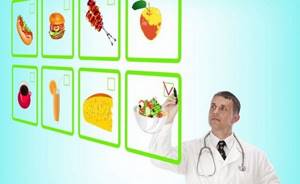
If this form of the disease occurs, first of all the patient is advised to refrain from eating for several days. During this period, it is better to give preference to a drink, from which you can select sweetened tea or rosehip infusion. It is important that the drink is slightly warm.
After this period, the patient switches to nutrition according to the diet for chronic gastroduodenitis.
Why do you need special nutrition for duodenitis?
With duodenitis, the mucous membrane lining the duodenum becomes inflamed. The pathological process most often begins due to irregular meals, abuse of spicy, too hot food and alcohol-containing drinks.
Removing inflammation from the mucous membrane is possible only through a healthy diet. During treatment, the patient must follow a special diet that includes sparing the duodenal mucosa. If all nutritional rules are followed, the progression of the inflammatory process stops. Gradual restoration of the mucous membrane begins.
Ignoring nutrition rules is fraught with:
- deterioration of health;
- increased symptoms of the disease;
- the occurrence of erosions and ulcers in the intestines;
- the appearance of dangerous complications - intestinal bleeding.
Diet for chronic gastroduodenitis
Timely identification of the disease, as well as elimination of the main symptoms, is the key to normalizing a person’s health. However, we should not forget that from the very moment the patient is diagnosed, it is impossible to return to the usual, but harmful lifestyle and diet.
Firstly, because the disease itself is the result of an incorrect and unbalanced diet, in which junk food predominated, non-compliance with the diet, etc.
Secondly, problems in the body from the gastrointestinal tract, pancreas, stomach, etc., rarely go away without a trace. As a rule, gastroduodenitis, if left untreated and the doctor’s recommendations are ignored, returns again.
In the chronic form of the disease, it is necessary to drink plenty of fluids, in small portions, to exclude foods that can irritate the mucous membrane, that is, taboos on seasonings and spices, sauces, smoked and canned foods, mushrooms. The taboo concerns fried foods, as well as cereals - wheat, pearl barley, millet, and vegetables with cheese.
It is recommended to eat vegetables that have undergone heat treatment
Prohibited Products
In case of acute inflammation, the diet is strict, in which you must adhere to the following rules:
- A person may not eat for several days or eat very little. This will bring some relief. At this time, he can drink tea with sugar, water or a weak rosehip decoction an hour before eating homogenized food.
- If during illness the patient decides to eat porridge, then it should be boiled and easily digested by the stomach.
- At this point, it is better to wait with meat or use meat puree, crushed in a blender. Dishes must be well cooked.
- You need to eat food without salt and spices. You should not drink sour fruit juice or eat fatty meats or fish.
- Any fruit is prohibited at this stage. Fatty homemade broths are also taboo.
For various forms of gastroduodenitis, the menu changes slightly, but there are foods that are strictly prohibited for any gastrointestinal pathology. These include:
- smoked meat,
- semi-finished products
- marinades and pickles,
- mayonnaise and other sauces,
- alcohol,
- hard vegetables in raw form,
- canned food
The principle of nutrition depends on how affected the gastrointestinal tract organs are and on the acidity of the stomach.
Diet for exacerbation of gastroduodenitis
When the acute form of the disease has already passed, the patient is recommended to introduce mucous porridge into the diet. It can be semolina or oatmeal porridge, rice porridge or buckwheat - pureed. It is very useful to eat soups. You can also introduce lean meat and fish into your diet, but they must be chopped. Nutrition should be supplied to the body at least 5 times, that is, fractionally.
It is also important to maintain drinking balance by introducing jelly, weak, barely sweet tea or rosehip decoction into the diet.
The diet for gastroduodenitis excludes cocoa and carbonated drinks, sauces and spices, raw fruits and vegetables, confectionery and flour products, as well as alcohol.
Prevention
To prevent the development or exacerbation of gastroduodenitis, you need to follow a few simple recommendations - eat right, normalize your diet, give up bad habits.
- Do not smoke, do not indulge in drugs.
- Take medications when particularly necessary.
- Do not abuse alcohol.
- Avoid carbonated drinks, especially Cola, Pepsi, Fanta.
- Limit consumption of coffee, sweets, spices.
- Eat soup every day and drink at least 1.5 liters of liquid.
- Arrange fasting days once a week. They drink kefir, mineral water, eat raw vegetables and fruits.
- Limit spicy, fatty, salty, fried foods.
- Avoid overeating, too strict a diet, and snacking at night.
- Do not eat away nervous stress, take sedatives in the form of tincture of Valerian, Motherwort, Nova-Passita.
Prevention measures must be constantly remembered; exacerbation can occur at any age. Parents are responsible for the health of their children. To strengthen the immune system, it is recommended to take vitamin complexes, and to normalize the intestinal microflora - probiotics.
Diet for gastroduodenitis with high acidity
The disease can be accompanied by either sluggish gastric motility and decreased acid production, or, on the contrary, increased acid production. The latter form requires special attention, since the abundant production of acid provokes the appearance of wounds - ulcers on the wall of the stomach, which is fraught with the development of ulcers. Therefore, the patient is recommended to eat fractional meals, with an equal period of time between feedings, at the same time. Dishes must undergo heat treatment, preferably steamed or in the oven, or boiled. And food ready to eat should be warm.
It is necessary to maintain a drinking balance, drink both compotes and jelly, and juices, tea with milk or rosehip decoction.
The diet for gastroduodenitis includes dairy products and mild cheese, mousses and jellies, pasta and cereals, crackers and biscuits, boiled sausage or ham, pureed soups, and baked fruits. Lean meats and fish. The only vegetables are green peas and dill, as an addition to the soup.
What can you eat
Most gastroenterologists advise adhering to Table No. 5 in the chronic course of the inflammatory process. This type of dietary restriction is quite well balanced in the composition of proteins, fats and carbohydrates, and does not create additional stress on the digestive tract.
Recommended Products:
- dried white and black bread (yesterday's);
- all types of cereals;
- low fat milk;
- cottage cheese with a fat content not exceeding 5%;
- all types of fermented milk products;
- durum wheat pasta;
- chicken eggs (no more than two per day);
- quail eggs (it is optimal to start the day with three raw eggs, drunk on an empty stomach);
- lean meats;
- lean types of fish;
- mushrooms, stewed or boiled;
- olive oil for seasoning pasta or stewing vegetables;
- sweet berry jelly;
- sweet berry jam;
- honey (in limited quantities);
- homemade jelly, but only from non-acidic juices;
- sweet fruit compote;
- vegetables after heat treatment;
- sweet fruits.
Diet for erosive gastroduodenitis
Erosive gastroduodenitis implies the formation of erosions on the walls of the stomach and duodenum, therefore the recommended diet for gastroduodenitis should help eliminate the effect on the mucous membrane. This means that thermal and chemical exposure should be reduced with nutrition. The goal of this diet is to saturate the body with nutrients along with minimal stomach irritation and rapid digestion of food.
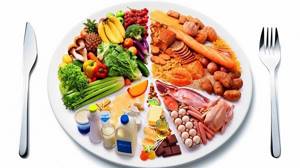
Meals should be divided into 6 or 7 times a day, completely eliminating salt and seasonings. You can eat cottage cheese, non-acidic kefir and cream. Slimy porridges and soups, omelettes. Meat and fish should be low-fat varieties, they should be thoroughly ground and steamed.
Among vegetables, you should give preference to pumpkin and beets, carrots and cauliflower. Fruits are available baked.
What not to do
First of all, it is necessary to exclude:
- any food prepared by frying;
- smoked meat, fish, cheese, sausages;
- pickled vegetables and fruits;
- spicy (including spices);
- fatty types of meat and fish;
- freshly baked bread;
- baked goods;
- confectionery;
- sausages;
- chocolate;
- ice cream;
- onions (both green and onions);
- cabbage (white, purple, savoy, etc.);
- fresh vegetables (especially radishes and radishes);
- legumes
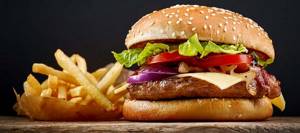
The ban on the use of these products is associated with the irritating and gas-forming effects that they have on the gastric mucosa. This provokes the development of pain and a significant deterioration in the patient’s condition. For a complete recovery, it is not enough just to maintain proper nutrition; it is necessary to approach this process comprehensively.
Diet for superficial gastroduodenitis
This form of the disease develops as a result of gastritis. Most often, the cause of the development of superficial gastroduodenitis is non-compliance with basic rules of food intake, as well as proper nutrition. For superficial gastroduodenitis, you need to eat 5 times a day, in small portions of food.
To mitigate the course of the disease, as well as its symptoms, you should include in your diet low-fat cottage cheese and milk, lean meat and fish, boiled vegetables - beets and carrots, potatoes and peas, as well as fruit purees and jelly. To drink – alkaline mineral waters and compotes.
This diet for gastroduodenitis lasts for at least 3 months.
Features and causes of the disease
Chronic gastroduodenitis develops as a result of an incompletely cured acute form of gastritis. Provoking factors for the next exacerbation, as well as the initial appearance of this disease, are:
- Abuse of strong alcoholic drinks and smoking.
- Damage to the stomach by the pathogenic bacterium Helicobacter.
- Eating excessively hot or spicy food.
- The habit of eating dry food.
- Damage to the walls of the stomach during treatment with aggressive medications.
- The influence of existing chronic diseases of the stomach and digestive system.
- Stomach infection.
- Stress and nervous tension.
Diet for atrophic gastroduodenitis
The atrophic form of gastroduodenitis implies a violation of secretion, that is, the acidity of gastric juice decreases.
With this form of development of the disease, a therapeutic diet for gastroduodenitis No. 2 is recommended, which implies the introduction of yesterday’s wheat bread and soft pastries into the diet. Soups and cereals cooked with weak vegetable or meat broths, fruit purees. Dairy and fermented milk products are low-fat (with the exception of milk), as are meat and fish. You can use honey and lemon.
Meals should be fractional, solid and liquid food should be taken separately at equal intervals in time.
How to use diets
Diet 1a is used for 3-7 days. During this time, the mucous membrane recovers: it is allowed to move on to 1b and eat foods such as potatoes (in the form of mashed potatoes). After 2 weeks, patients move on to 1c.
The signal to move to table 1b is the disappearance of abdominal pain. The duration of meals according to the plan does not exceed 14 days. You are allowed to sit on 1b for a year until the symptoms disappear.
Features of the listed diets:
- Table 1a for duodenitis is prescribed for 3-5 days. Aimed at regenerating mucosal tissue through food processing. Bread, dietary fiber, spicy foods, vegetable fats, and spices are prohibited. Mucous soups are consumed, meat is ground, porridges are liquid from semolina or rice. It is recommended to drink juices with pulp and jelly.
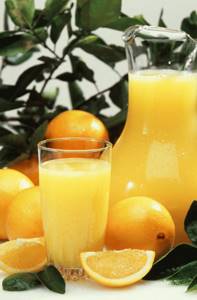
- Table 1b is prescribed during recovery following 1a, lasts 1-2 weeks. The consumption of fresh bread, vegetable oil, spices and spicy foods is not allowed. Plant fibers and dairy products are limited. It is allowed to consume thoroughly pureed soups based on vegetable broth or milk, meat, vegetable, and fish products.
- Table 1b is used for 3-12 months for recovery after an attack. You should not eat black bread and coarse fiber. Boiled vegetables, meat and fish are allowed.
The diet is divided into 5-6 meals so as not to burden the stomach and duodenum. If there are complications with nutrition according to 1c, return to 1b.
Diet for pancreatitis and gastroduodenitis
Diseases associated with digestion and the intestinal tract, one way or another, are associated with the fact that most people neglect the basic rules of food intake, as well as recommendations for proper nutrition. As a result, the development of diseases such as pancreatitis and gastritis, ulcers, gastroduodenitis, etc.
In case of pancreatitis, against the background of exacerbation or development of gastroduodenitis, it is necessary to give rest and rest to the pancreas for at least 3 days. During this period it is necessary to drink teas and decoctions. And only from the fifth day you can add vegetable puree from carrots and potatoes. Preference should be given to soups and dairy products.
Psychological component of the disease
Gastroduodenitis is an unpleasant and often painful disease. It requires careful selection of food products and control over your lifestyle. At first it is difficult and unpleasant, but gradually you can adapt to it. Psychological support from loved ones is also very important so that a person is not left alone with his problem, especially in the family. A disease of the gastrointestinal tract is not a death sentence, but a good opportunity to establish a healthy diet not only for those who have this problem, but also for all family members.
This is especially worth paying attention to when it comes to a child. In addition to the fact that children do not tolerate pain well, restrictions on the usual delicacies have a serious impact on their psyche. Therefore, it is important that the child does not feel punished and deprived. There are many recipes for tasty and healthy dishes for stomach diseases that can replace what the family was used to before one of its members became ill.
Diet for gastritis and gastroduodenitis
Any severe form of gastritis and gastroduodenitis requires a gentle diet, avoiding the consumption of cigarettes and alcoholic beverages, as well as avoiding foods that contain coarse fiber, carbonated drinks, any spices and herbs, and milk.
Meals should be fractional and at least 5-6 times a day (7-8 is possible). You need to drink about 1500 ml of liquid per day, of which green tea or tea with lemon, decoctions of berries and herbs, jelly and compotes, fresh juices should be drunk, and the calorie content of food per day should be 2800 kcal.
All food must be thermally processed, with the exception of stewing, ground or chalked.
Consequences of not following the diet
Erosive gastroduodenitis, like its other types, is a very serious disease, and therefore a special diet is extremely necessary for it. If for any reason the patient ignores the doctor’s instructions and does not follow special nutritional rules, then he may encounter certain problems.
What results from non-compliance with nutritional instructions:
- to a lack of vitamins, especially group B;
- to diseases of the kidneys, liver, intestines and pancreas;
- to a sharp weight loss due to almost complete refusal of food;
- to stomach and duodenal ulcers;
- to depressive states due to a decrease in quality of life due to constant discomfort;
- to stomach cancer.
Unfortunately, at the moment there is no medicine that can cure gastroduodenitis once and for all. Only the comprehensive use of diet, medications, and daily routine can alleviate the course of the disease. The above diet will help improve the health of the entire body and cope with the negative symptoms of gastroduodenitis. Unfortunately, without using a diet, returning to normal life is impossible.
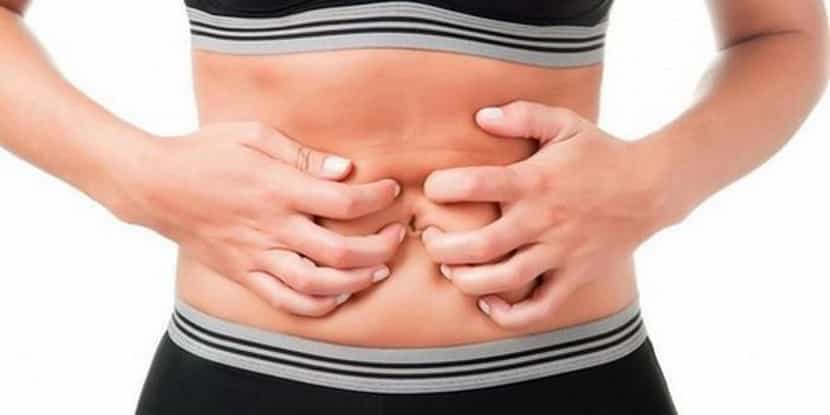
During an exacerbation, any physical activity is completely excluded. However, this only applies to the initial stage of recovery. In the future, it is imperative to add feasible physical activity to your daily routine. This will have a beneficial effect not only on the functioning of the entire body, but also on the proper functioning of the digestive tract.
Diet for gastroduodenitis and cholecystitis
When gastroduodenitis is accompanied by cholecystitis, as gastroenterologists recommend, you need to create a diet in such a way as to neutralize excess hydrochloric acid and choleretic action. By the way, cholecystitis is a disease of the gallbladder. So, in response to inflammation during gastroduodenitis, the organs must be at rest. Therefore, such a diet for gastroduodenitis, as a rule, contains non-acidic fruits, dairy products and vegetable dishes with cottage cheese, boiled meat and fish, carefully processed and ground.
It is not recommended to eat fresh bread and baked goods, raw eggs and mushrooms, smoked and canned foods, fatty fish and meats.
Features of the fifth dietary table
For the treatment of gastroduodenitis, table No. 1 is prescribed. Table No. 5 can be prescribed as a secondary diet - it restores the functioning of the pancreas and bile ducts. The fifth table helps restore the gallbladder and liver.
Diet 5 excludes all recipes containing beef, lamb and pork meat, lard, lard and duck. You should also exclude offal, goose, sausages, salted fish, and smoked meats from the diet.

Lean meat and fish are recommended, namely veal, rabbit and chicken, turkey. You can add vanillin, cinnamon, butter, and refined butter to your food. It is recommended to exclude fresh baked goods, bread, puff pastry, pies, baked goods, cakes and pastries, and chocolate from the diet. Pastille, marmalade, jelly, meringue, mousse, compote, dried fruit, low-fat cheese and kefir are allowed.
It is forbidden to drink milk and fermented baked milk, cream, eat fatty and salty cheese, as well as homemade sour cream. The menu should include broths, porridges and light soups.
Diet for gastroduodenitis in children
It is very important to take all possible measures in case of gastroduodenitis in children, because a timely reaction is the key to the future of the child.
It should be remembered that in acute cases, the child must eat at least 6 times a day. And for the first 5 days, the most gentle diet should be maintained.
On the first day of exacerbation, it is necessary to give warm drinks. From the second day, you can introduce rice water, vegetable broth and crackers into your diet. On the third day, you can give your child oatmeal or rice porridge and dry cookies. On the fourth day, you can have vegetable puree from carrots, pumpkin and potatoes, along with steamed meatballs, crackers and a baked apple. The fifth day of the diet allows you to expand the diet by adding a casserole of cottage cheese, fruit puree, etc.
Treatment of gastroduodenitis with flax
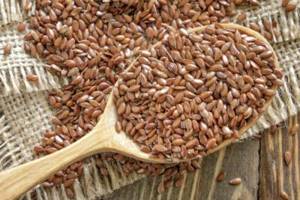
Flax seeds are very popular in folk medicine. They have been used in herbal medicine for a long time. Flax seeds are very valuable for the human body due to their high content of vitamins, nutrients and minerals.
Flax seeds have enveloping properties. When they enter the body, they attract all pathogenic elements to themselves and then remove them out.
The decoction creates mucus that envelops the stomach and perfectly relieves inflammation. You can prepare such a decoction as follows: brew 3 tablespoons of seeds in 1 liter of boiling water, cover with a lid overnight. Drink ½ glass in the morning on an empty stomach, and take the rest throughout the day. In order not to steep the product all night, you can boil it for 2 hours. More recipes for treating gastroduodenitis with folk remedies.
A balanced and proper diet will help get rid of the symptoms of gastroduodenitis. By following all the proposed recommendations, you can relieve the exacerbation of the pathology in a short time. It is not recommended to carry out treatment without a doctor's prescription.
Gastroduodenitis is a very serious disease that is quite difficult to completely cure. The fact is that most people bring the inflammatory process to a chronic course, and only after that they begin to take some action to eliminate the consequences of the disease.
Of course, drug treatment is an important point on the path to healing. However, chronic gastroduodenitis can only be treated through serious changes in diet, and therefore a special diet comes first in the matter of therapy. Only by following certain rules in building a diet can you get a stable remission, and possibly a cure.
Menu options for the week
Below is the diet 1a prescribed for an acute attack.
| Monday | Tuesday | Wednesday | Thursday | Friday | Saturday | Sunday | |
| First breakfast | milk, soft-boiled egg, jelly | omelette, milk, applesauce | soft-boiled egg, jelly, milk | soft-boiled egg, milk | soft-boiled egg, milk, applesauce | soft-boiled egg, milk, jelly | soft-boiled egg, applesauce, milk |
| Lunch | buckwheat porridge, fruit juice | oatmeal porridge, fruit juice | rice porridge, fruit juice | buckwheat porridge, applesauce | oatmeal, fruit juice | pureed pearl barley porridge, jelly | rice porridge, fruit juice |
| Dinner | rice soup, twisted meat, dried fruit jelly | semolina soup, twisted meat, dried fruit jelly | oatmeal soup, twisted meat, dried fruit jelly | oatmeal milk soup, twisted meat, jelly | milk rice soup, twisted meat | oatmeal soup, twisted meat, dried fruit jelly | semolina soup, twisted meat, dried fruit jelly |
| Afternoon snack | soft-boiled egg, milk | soft-boiled egg, milk | soft-boiled egg, milk, applesauce | soft-boiled egg, milk | cottage cheese, milk | applesauce, milk | milk |
| Dinner | semolina milk soup, tea with lemon | rice soup, tea, jam | milk soup, tea, jam | semolina soup, jelly | semolina milk soup, omelette, tea, lemon wedge | semolina soup, tea | oatmeal soup, omelette, tea with jam |
| Evening snack | milk | milk | milk | milk | milk | milk | milk |
Do not substitute products listed on the menu. It is better not to eat some vegetables under 1a and 1b. Thus, pumpkin is not recommended for low acidity, and the skin of tomatoes is cut off before use.
Persimmon and chicory are contraindicated for those with erosive gastritis. Among cereals and legumes, avoid peas and millet.
If you are unsure about specific products, check with your healthcare professional.
Another diet option
The menu for the week might look like this:
- Monday. For breakfast, you can prepare rice porridge with milk and half and half water and a baked apple with cottage cheese. For lunch - vegetable soup and steamed meatballs. For dinner, cook buckwheat with boiled fish.
- Tuesday. Breakfast – oatmeal with milk, berry jelly. Lunch - boiled rice and boiled meat, rosehip infusion or brewed chicory. Dinner – vegetable puree, a glass of weak tea.
- Wednesday. Breakfast – low-fat cottage cheese, tea or fruit jelly. Lunch – baked meat soufflé. Dinner – buckwheat porridge with lean meat.
- Thursday. Breakfast – semolina porridge and low-fat cottage cheese. Lunch – soup with rolled oats, steamed cutlet. Dinner – rice pudding, croutons.
- Friday. Breakfast – cottage cheese casserole, banana, tea. Lunch – rice soup, vegetable puree, steamed cutlet. Dinner – fruit salad, rice and milk casserole.
- Saturday. Breakfast – oatmeal porridge, baked apple. Lunch – buckwheat soup, vegetable puree, lean boiled meat. Dinner – stewed vegetables, baked fish.
- Sunday. Breakfast - cottage cheese with strawberries, lunch - rice porridge and jelly, dinner - vegetable puree and boiled meat.
Recipes for delicious healthy dishes

Nutrition should not be monotonous. Even from healthy products you can prepare hearty, tasty food. Include recipes for soups, desserts, and main courses in your menu. Among the most popular are the following:
- Meatballs. Prepare minced chicken fillet. Mix it with grated rice porridge. Add a small amount of milk. Form small balls from the mixture. Boil them until tender in boiling water.
- Baked apples. Only sweet and sour varieties are suitable for this dish. Remove the core from the apple. Lightly sprinkle the resulting hole with powdered sugar. Place the fruit in the oven at low temperature. As soon as a golden brown skin forms on it, remove it. Drizzle with a little honey. Serve to the table.
- Fruit salad. Any non-acidic fruit is suitable for its preparation. It is better to give preference to bananas, apples, peaches. Add some strawberries. Finely chop all ingredients. Fill with light natural yoghurt or milk. Remember that eating such a salad is often undesirable, but once every few days you can treat yourself to it.
- Berry mousse. Use any berries except those that are prohibited. Rinse them thoroughly. Squeeze out the juice. Bring the mixture of juice, remaining berries and water to a boil. Filter the composition. Bring the remaining liquid to a boil again. Add some sugar and semolina. Don't forget to stir constantly. After the mixture has cooled slightly, whisk it. Place among bowls.
- Vegetable broth. Chop the potatoes and carrots into small cubes. Boil for about 25 minutes over low heat. After this, let the broth brew for about 15 minutes. Filter. You can cook any cereal soup with this broth.
- Stewed fish. Select a suitable piece of pollock, blue whiting, cod or river perch. Salt it. Chop carrots and celery into circles. Chop some dill. Place the fish in a thick-bottomed pan. Pour in water or vegetable broth. Arrange the vegetables. Simmer the fish for about half an hour over low heat.
- Light vinaigrette. For it you will need: beets, carrots and potatoes. Boil the vegetables in a double boiler and chop them. Mix the salad. The dressing can be linseed oil.
- Semolina soup. Boil one and a half glasses of milk. Gradually add a tablespoon of semolina. Cook for about 20 minutes, stirring constantly. Add 20 grams of butter and a teaspoon of granulated sugar.
- Lazy dumplings. Grind the package of cottage cheese using a sieve. Add a tablespoon of flour, a teaspoon of sugar and an egg. Knead the dough. Roll it into a sausage. Cut into small pieces. Boil the resulting rounds in boiling water for 5 minutes. Serve with low-fat sour cream.
- Carrot soup. Eggs, carrots, flour, low-fat meat broth, butter. Boil the carrots in the prepared broth until tender, remove them and grate them on a fine grater. Fry the flour and mix thoroughly with the carrots. Combine the resulting mixture with the broth. Boil, add lightly beaten chicken eggs, add butter.
- Vegetable soup with meat broth. Broccoli, carrots, tomatoes, zucchini, meat broth, low-fat sour cream, salt. Boil vegetables in the prepared broth until tender, add salt and sour cream.
- Baked fish with mashed potatoes. Any white lean fish, potatoes, butter, salt. Boil the potatoes, mash, add salt and oil. Bake the condemned pieces of fish in the oven.
- Chicken breast with vegetables. Steam the allowed vegetables, cook the chicken breast in a slow cooker, pour in butter.
- Cheesecake made from berries (fruits). Soft cottage cheese, oatmeal, sweet berries, butter, sweetener egg, gelatin. Grind the oatmeal in a blender and mix first with the white, and then the yolk and sweetener. Add cottage cheese and mix. Place the resulting mixture in the prepared pan (grease the walls with butter), add the gelatin previously diluted in water, mix and place in the oven for 40 minutes.
- Drink kefir + strawberries. Kefir 1%, granulated sugar, strawberries (strawberries). Rinse the berries thoroughly with water and sort. Cover with sugar for one hour. Pour in kefir and beat with a blender until thick foam. Cool.
Cooking food
The diet involves using only gentle cooking methods. Approximately 80% of foods need to be boiled (steamed, in water). About 20% can be left for baking and stewing. When cooking soup, a second broth is used. That is, after 5 minutes of boiling meat or poultry, the first water must be drained.
What else do you need to know:
- You can add salt, but in small quantities;
- It is better to add fats to the finished dish when serving;
- You shouldn’t bake food to a strong crust; it’s better to cover the pan;
- Baking is prepared a day before use.
Molds with modern coatings, baking paper, bags, and foil will be good helpers. A blender is a must. A double boiler will not be superfluous.


